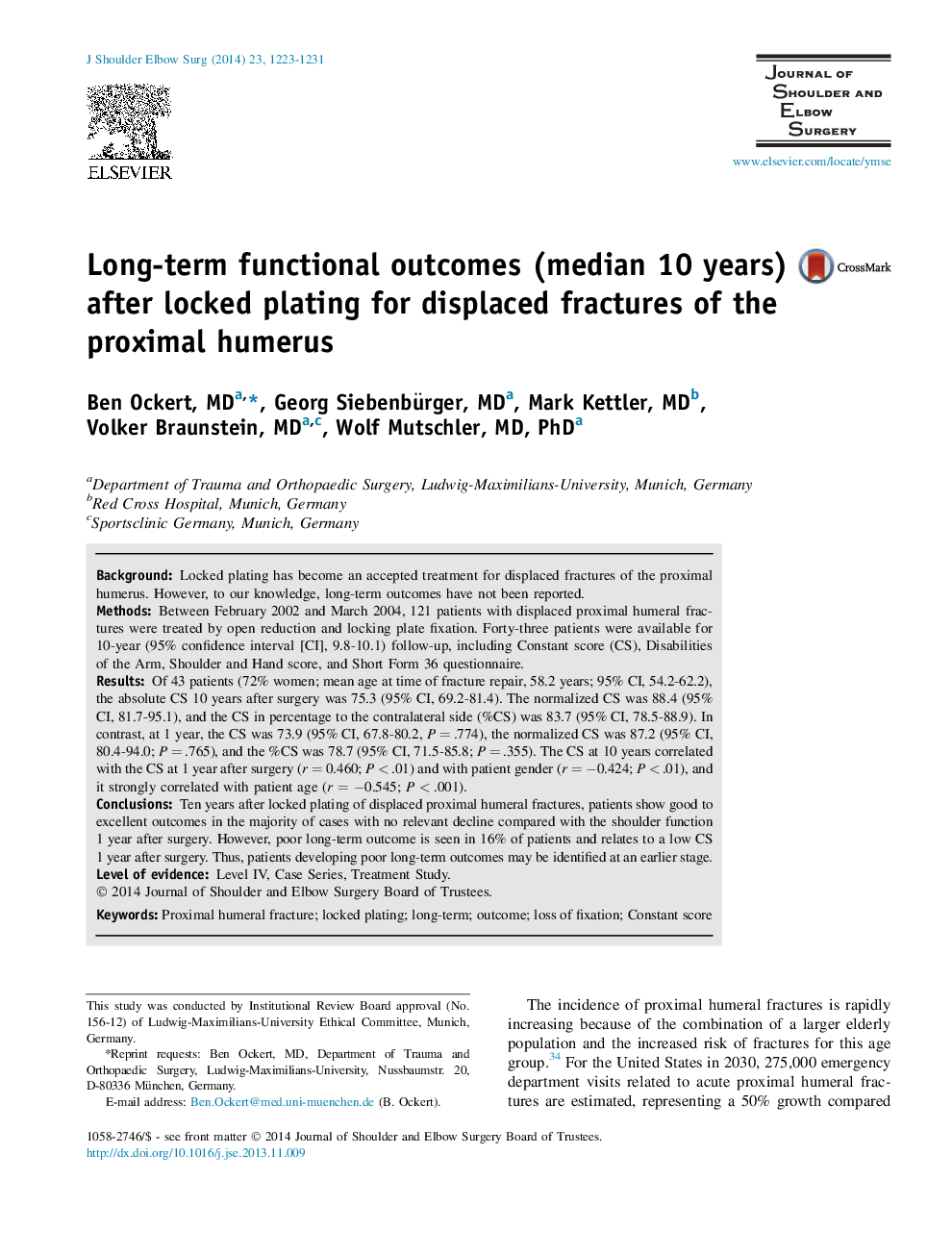| Article ID | Journal | Published Year | Pages | File Type |
|---|---|---|---|---|
| 4074124 | Journal of Shoulder and Elbow Surgery | 2014 | 9 Pages |
BackgroundLocked plating has become an accepted treatment for displaced fractures of the proximal humerus. However, to our knowledge, long-term outcomes have not been reported.MethodsBetween February 2002 and March 2004, 121 patients with displaced proximal humeral fractures were treated by open reduction and locking plate fixation. Forty-three patients were available for 10-year (95% confidence interval [CI], 9.8-10.1) follow-up, including Constant score (CS), Disabilities of the Arm, Shoulder and Hand score, and Short Form 36 questionnaire.ResultsOf 43 patients (72% women; mean age at time of fracture repair, 58.2 years; 95% CI, 54.2-62.2), the absolute CS 10 years after surgery was 75.3 (95% CI, 69.2-81.4). The normalized CS was 88.4 (95% CI, 81.7-95.1), and the CS in percentage to the contralateral side (%CS) was 83.7 (95% CI, 78.5-88.9). In contrast, at 1 year, the CS was 73.9 (95% CI, 67.8-80.2, P = .774), the normalized CS was 87.2 (95% CI, 80.4-94.0; P = .765), and the %CS was 78.7 (95% CI, 71.5-85.8; P = .355). The CS at 10 years correlated with the CS at 1 year after surgery (r = 0.460; P < .01) and with patient gender (r = −0.424; P < .01), and it strongly correlated with patient age (r = −0.545; P < .001).ConclusionsTen years after locked plating of displaced proximal humeral fractures, patients show good to excellent outcomes in the majority of cases with no relevant decline compared with the shoulder function 1 year after surgery. However, poor long-term outcome is seen in 16% of patients and relates to a low CS 1 year after surgery. Thus, patients developing poor long-term outcomes may be identified at an earlier stage.
